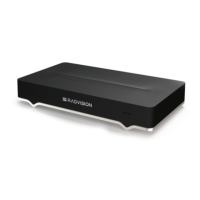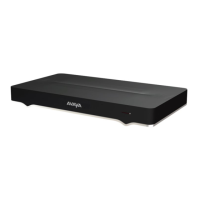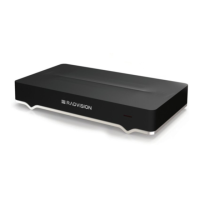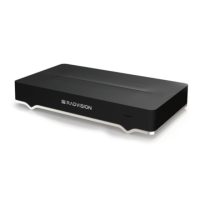• A digital microphone brings higher quality sound, and are usually connected via optical cables
which can be deployed over longer distances than analog (copper) wires.
• For more complex audio setups, you can connect the XT Series to an audio mixer.
•
The XT Codec Unit uses the same audio in port for third-party digital microphone, analog
microphones, line input, and computer audio, so you must choose between them. You can free
this port when you use the digital three-way XT Digital Microphone Array Pod, which uses its
own microphone
port, or by using an audio mixer.
There are several connections available to input audio to the XT Series:
•
The dedicated microphone
port is for the digital Three-way Microphone Pod. The XT5000
Series can support two of these microphones daisy-chained.
• The USB port is used for USB headsets, or for a USB camera with a built-in microphone (lower
USB only).
•
The audio input port
is for:
- The analog One-way Microphone Pod or any other analog microphone with a 3.5mm jack.
- A third-party digital microphone with a mini-TOSlink connector.
- Audio mixers like those from Clear One. An audio mixer connects multiple microphones (or
other audio inputs) to generate a single audio stream.
- A computer audio-out connection or line audio connection.
Table 8: Types of microphones on page 60 describes the most common types of microphones
used with an Avaya Scopia
®
XT Series.
Table 8: Types of microphones
Type of
Microphon
e
Optimal Room
Size
Advantages Disadvantages Microphone
Specifications
Typically
Used With
USB
Camera
with Built-in
Microphon
e, or USB
headset
Personal
endpoint for
close proximity
to speaker
Cost-effective.
Frees the audio input
port for computer
audio input.
Short range,
suitable for a single
participant only.
Digital audio
Supported
headsets:
Plantronics
Voyager Pro UC
Wireless
Plantronics Savi
W440
Jabra Pro 9450
Duo
Scopia
®
XT
Executive
Table continues…
Setting Up the XT Series Hardware
60 Avaya Scopia
®
XT Series Deployment Guide April 2015
Comments? infodev@avaya.com

